
Top 6 signs your collaboration needs an overhaul
Reading time: about 8 min
Topics:
No surprise: Effective collaboration is extremely important to your business. And probably even more than you may realize. Team members working in jobs with high collaboration report nearly a 30% increase in job satisfaction, almost a 20% decrease in turnover intent, and they’re 50% more likely to complete a task successfully.
And also no surprise: The workplace has changed drastically over the past few years, from the rise of hybrid and remote work to more tools and apps than ever before that tout the ability to boost collaboration. But with such a rapidly changing landscape and so many collaboration options out there, it can be easy to get stuck in outdated, inefficient ways of working. Add in our nature to habituate, and we may not even realize if one of our processes, procedures, or tools needs an update. Nostalgia is all the rage, but if your tech stack and collaboration are outdated, you’re simply not getting the results you could—and deserve—to be getting.
We get it. It can be a difficult and time-consuming landscape to navigate, so it’s human nature to just keep doing what we’ve always done instead of questioning whether there is a better way. Luckily, we are here to help. In this article, we’ll share signs that your collaboration may not be as effective as it could be. Plus, we’ll offer our best tips and resources to seamlessly remedy that, so you can ensure you (and your team) are getting the best results possible.
Six signs that your collaboration isn’t effective
1. You’re having a lot of meetings
Meetings are necessary and they’re not innately bad, but if you feel like your days are filled with them, chances are you may not be collaborating as efficiently as you could be. And if you’re having a lot of follow-up meetings or noticing that you’re covering similar information across multiple meetings, the problem only compounds.
Research shows that 3.6 hours per individual weekly are lost to unnecessary meetings, and US businesses report spending a whopping $37 billion on meetings annually. So extraneous meetings aren’t just a nuisance or something that comes with the territory of a job, they are actually costing your business a significant amount of time and money. And more meetings don’t automatically equate to more (or better) collaboration. Often, the excessive meeting fatigue is actually preventing you from working your best.
Luckily, while the fix may not happen overnight, it’s not overly complicated either. Thinking critically about each recurring meeting you hold is a great place to start, then considering whether or not you really need those extra meetings should be next.
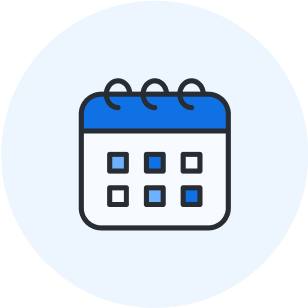
We can walk you through it! Follow our flowchart to decide if you really need a meeting.
Check it outAsynchronous collaboration—or collaborating on your own time vs. simultaneously as a team— is a perfect alternative. Whether you’re utilizing visual collaboration software, messaging apps, or another platform to communicate, async collaboration allows you to cut extraneous meetings without losing valuable collaboration. In fact, in some situations, the collaboration will actually become more valuable because it gives your team members time back, boosts efficiency, decreases the pressure of coming up with on-the-spot ideas and reactions, and reduces meeting fatigue.

Learn more about asynchronous collaboration and how to implement it with our guide.
Read now2. Your meetings aren’t well organized
Of course, not all meetings should be canceled. But if your meetings are frequently starting or running late, if you don’t always have an agenda, or if there isn’t a formalized note-taking (or documentation) process, you likely are not making the most of the meetings you do have. And that’s probably leading to more meetings in general, too.
Your time is precious, and you deserve to maximize your meeting times. Documentation on a visual canvas that everyone has access to—where notes, action items, and decisions can be recorded during the meeting—is a must to ensure alignment and productivity. Additionally, an effective meeting agenda prepares attendees for discussion, encourages participation, and keeps your meeting focused (so you’re less likely to go over time).
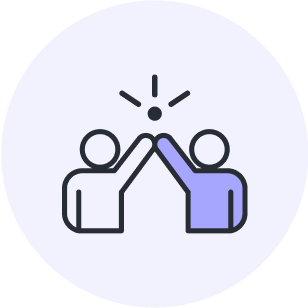
Ready to optimize your meetings?
Check out our hacks3. You’re sending documents back and forth or working from multiple versions of the same document
This is a practice that is so common it may not be questioned, but rest assured, there’s a better way! If you’re working from multiple versions of the same document or you send documents back and forth, you’re likely spending unnecessary time searching for the resources you need. This back and forth makes the chances of working from outdated resources go up, which will mean wasted time and redundant work. Plus, due to changing roles and turnover, you may feel unsure about who manages certain documents, wasting even more of your time tracking down document owners.
But a good single source of truth will propel your team’s best work. A single source of truth is a centralized repository for your team’s documents, data, and information. Once you have a one-stop shop for your team to easily add to and pull from, your team can:
-
Stop searching for information.
-
Save time on recurring tasks.
-
Avoid duplicate work.
-
Identify patterns within ideas and data.
Instead of asking around for documents or spending time searching through email chains, you’ll empower your team with confidence because they’ll know right where to go for answers every single time.
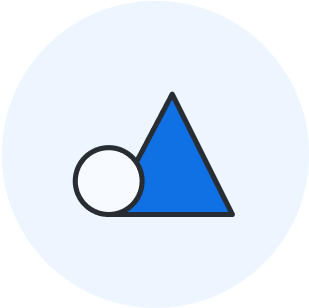
We can help you build a single source of truth that your team will actually use.
Explore our guide4. You experience frequent misunderstandings on your team
Misplaced or duplicate documents are just one part of organizational misalignment. Experiencing frequent misunderstandings on your team can also be indicative of an issue.
There are many things this could look like, but it often involves frequently lacking clarity around project goals, timelines, and priorities. If you feel like you’re having to spend time seeking answers to basic questions on every project, or you often leave meetings without a clear direction, your team has a collaboration problem.
These issues likely stem from not having a clear record of decisions or other project details. As mentioned, a single source of truth is helpful in solving that issue, but let’s take it one step further: Not all documentation is created equal, and the mere presence of documentation doesn’t automatically equate to clarity on your team.
One of our best hacks for optimized documentation? Add visuals.
Similarly to how it’s easier to misinterpret text messages, you’re bound to interpret things differently when you’re only using text-based communication like emails or Slack on your team. Visuals help eliminate clarity issues, providing a shared language for teams to communicate quickly. With a glance, you can find understanding to confidently move forward on tasks and projects.

Discover different ways that visuals drive better decisions and help you do your best work.
Get started5. You use spreadsheets for pretty much everything
Spreadsheets have been around for several decades and are great for inputting and analyzing large amounts of data, but they’ve grown to be used in many other ways, too.
The problem? Spreadsheets are difficult to use, overwhelming to look at, promote siloed work, and are highly error-prone. Plus, since they aren’t optimized for internal communication, you have to rely on other tools (Slack, email, etc.) to ask questions or communicate needed changes, and there is no way to set up dependencies or alerts.
Again, spreadsheets have their place, but if you’re using them for other purposes (as visuals in presentations, as a means to collaborate, etc.), there is probably a better tool for you out there.
Using a visual collaboration solution like Lucid can help you make sense of data in ways spreadsheets can’t, accelerating decision-making and driving innovation. It’s also far easier to get started in Lucid than a spreadsheet. Lucid is intuitive and leverages work you’ve already done instead of you having to manually input data. Plus, it offers a flexible workspace with dozens of features that promote unlimited ideation and creation.

Learn more about why you should rethink your use of spreadsheets and why Lucid is such a good alternative.
Go now6. You hear from the same people in every meeting
And you’re not hearing from the same people in every meeting. If this is a problem in your org, you may think the same individuals just always have the best ideas or are the most outgoing, but the issue is probably more deeply rooted than that.
It is likely indicative of an issue with collaboration equity, or offering all participants the same ability to contribute and communicate equally, regardless of whether they work in-office or remotely, have different collaboration styles, are at varying levels of seniority, are neurodivergent, etc.
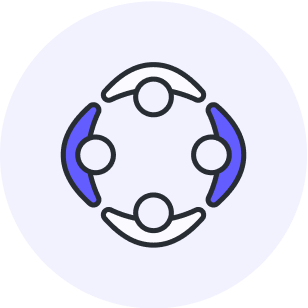
Research shows there are three different collaboration styles, and team members with each style need different things to do their best work.
Check it outIf you aren’t collaborating equitably, you aren’t achieving the full potential of the people and teams you’re working with. Employees also may feel frustrated and dissatisfied or like their organization doesn’t value their input. It also means you’re getting fewer ideas and probably missing some of the best ones out there.
Without collaboration equity, high-value collaboration simply isn’t possible. But with it, you’ll find more productive, fulfilling ideation sessions and meetings, more satisfied employees, and a more equitable workplace overall.

Get our best ideas for promoting collaboration equity in your org.
Read the guideThe solution to all of the above? Visual collaboration.
If you’ve noticed a trend, you’re not wrong—according to our research, making your collaboration visual solves the majority of collaboration woes. Learning more about visual collaboration and taking steps to implement it is the perfect way to overhaul any piece of your collaboration that needs it.
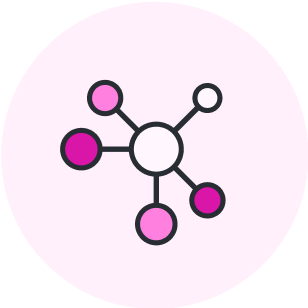
Visual collaboration is much more than a buzzword. Learn how to make your collaboration visual.
Get startedAbout Lucid
Lucid Software is the leader in visual collaboration and work acceleration, helping teams see and build the future by turning ideas into reality. Its products include the Lucid Visual Collaboration Suite (Lucidchart and Lucidspark) and airfocus. The Lucid Visual Collaboration Suite, combined with powerful accelerators for business agility, cloud, and process transformation, empowers organizations to streamline work, foster alignment, and drive business transformation at scale. airfocus, an AI-powered product management and roadmapping platform, extends these capabilities by helping teams prioritize work, define product strategy, and align execution with business goals. The most used work acceleration platform by the Fortune 500, Lucid's solutions are trusted by more than 100 million users across enterprises worldwide, including Google, GE, and NBC Universal. Lucid partners with leaders such as Google, Atlassian, and Microsoft, and has received numerous awards for its products, growth, and workplace culture.
Related articles
5 red flags to look out for when evaluating visual collaboration platforms
Learn how to uncover critical weaknesses in visual collaboration platforms before you commit.
How visual collaboration helps you connect in a hybrid work environment
In this blog post, we’ll dive into ways that you can stay connected in a hybrid work environment and embrace the Next Normal.
How to use Lucid as a single source of truth
See our list of tips and features to help you get the most out of Lucid and make it a place where you and your team can go to find up-to-date documentation.
How to use a collaboration assessment to evaluate and improve your team’s collaboration
Learn how to use a collaboration assessment tool for your team as we walk you through five key areas of collaboration.